-
EPA issues new soot pollution standard over industry’s objections
The Environmental Protection Agency (EPA), acting under court order, on Friday issued a new standard for soot pollution; the agency estimates the cost of complying to be between $53 million and $350 million – and the estimated benefits to be between $4 billion and $9 billion; utilities, manufacturers, chemical companies, and the oil and gas industry asked for a delay in issuing the rule, arguing it would be costly to implement
-
-
To keep global average temperature from rising above 2°C, action should be taken by 2020
Limiting climate change to target levels will become much more difficult to achieve, and more expensive, if action is not taken soon, according to a new analysis; a new study explores technological, policy, and social changes that would need to take place in the near term in order to keep global average temperature from rising above 2°C, a target supported by more than 190 countries as a global limit to avoid dangerous climate change
-
-
New view of meteorite impact
High-speed video of projectiles slamming into a bed of disks has given scientists a new microscopic picture of the way a meteorite or missile transfers the energy of its impact to sand and dirt grains; the research may change the way scientists model meteorite and missile impacts and their effects
-
-
U.S. Navy scientists honored for significant portfolio of newly patented discoveries and inventions
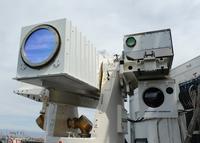
U.S. Navy scientists and engineers in 2012 once again had the world’s most significant government portfolio of newly patented discoveries and inventions, according to a November report published by the Institute of Electrical & Electronics Engineers (IEEE)
-
-
Top U.S., Canadian officials meet to discuss quickening pace of Arctic changes
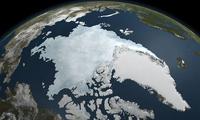
One manifestation of global warming is the accelerating pace of Arctic ice-cap melting; the U.S. Navy Arctic Roadmap, authored by the Navy’s Task Force Climate Change, notes that, “Because the Arctic is primarily a maritime environment, the Navy must consider the changing Arctic in developing future policy, strategy, force structure and investment”; top U.S. and Canadian officials meet to discuss the implications of the rapidly melting arctic ice
-
-
Sandy exposes weaknesses of antiquated sewage systems in N.Y., N.J.
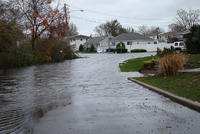
Hurricane Sandy destroyed homes, apartments, and entire communities, and it also exposed the outdated sewage systems in New York and New Jersey; since Hurricane Sandy, millions of gallons of raw sewage have infiltrated waterways in both states, and it could take several years and billions of dollars to fix the systems; New York governor Andrew Cuomo estimated that it will cost about $1.1 billion to repair treatment plants; officials in the field say that much more will have to be done
-
-
Engineers to build Australia’s first bushfire resistant straw house
With Australia’s bushfire season fast approaching, construction of the first bushfire resistant straw bale house tested by engineers from CSIRO has begun in rural Victoria; the house is based on design principles that minimize environmental impact and it is set to withstand temperatures equal to that of a worst case bushfire scenario
-
-
Technology emulates the Blind Cave Fish to help underwater vessels navigate with ease
Scientists have invented a “sense-ational” device, similar to a string of feelers found on the bodies of the Blind Cave Fish, which enables the fish to sense their surrounding and so navigate easily; using a combination of water pressure and computer vision technology, the sensory device is able to give users a 3-D image of nearby objects and map its surroundings
-
-
Target of limiting global warming to 2°C recedes as CO2 emissions grow
A new report shows that global CO2 emissions have increased by 58 percent since 1990, rising 3 percent in 2011, and 2.6 percent in 2012; the most recent figure is estimated from a 3.3 percent growth in global gross domestic product and a 0.7 percent improvement in the carbon intensity of the economy; these latest carbon dioxide emission figures continue to track at the high end of a range of emission scenarios, expanding the gap between current trends and the course of mitigation needed to keep global warming below 2°C
-
-
Terahertz waves for explosives detection
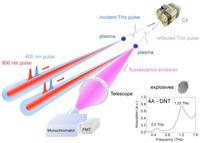
The chips generate and radiate high-frequency electromagnetic waves, called terahertz (THz) waves, which fall into a largely untapped region of the electromagnetic spectrum — between microwaves and far-infrared radiation — and which can penetrate a host of materials without the ionizing damage of X-rays; when incorporated into handheld devices, the new microchips could enable a broad range of applications in fields ranging from homeland security to wireless communications to health care, and even touchless gaming
-
-
Wind and solar power, paired with storage, would be cost-effective way to power grid
Renewable energy could fully power a large electric grid 99.9 percent of the time by 2030 at costs comparable to today’s electricity expenses, new research says; a well-designed combination of wind power, solar power, and storage in batteries and fuel cells would nearly always exceed electricity demands while keeping costs low, the study authors found
-
-
Climate models still struggle with medium- term climate forecasts
Scientists have evaluated twenty-three climate models and concluded that there is still a long way to go before reliable regional predictions can be made on seasonal to decadal time scales; none of the models evaluated is able today to forecast the weather-determining patterns of high and low pressure areas such that the probability of a cold winter or a dry summer can be reliably predicted
-
-
Marine robot completes 9,000 mile cross-Pacific journey, setting new world record
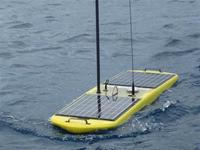
A wave-powered robot completes a 9,000 nautical mile (16,668 kilometers) scientific journey across the Pacific Ocean to set a new world record for the longest distance traveled by an autonomous vehicle
-
-
U.S. faces more – and more intense – wildfire

Scientists using NASA satellite data and climate models have projected drier conditions likely will cause increased fire activity across the United States in coming decades; the researchers calculated results for low and high greenhouse gas emissions scenarios; in both cases, results suggest more fire seasons that are longer and stronger across all regions of the United States in the next 30-50 years; specifically, high fire years like 2012 would likely occur two to four times per decade by mid-century, instead of once per decade under current climate conditions
-
-
Geoengineering could disrupt global rainfall patterns
Tackling climate change by reducing the solar radiation reaching our planet using climate engineering, known also as geoengineering, could result in undesirable effects for the Earth and humankind; in particular, new research shows that disruption of global and regional rainfall patterns is likely in a geoengineered climate
-
More headlines
The long view
Autonomous Vehicle Technology Vulnerable to Road Object Spoofing and Vanishing Attacks
Researchers have demonstrated the potentially hazardous vulnerabilities associated with the technology called LiDAR, or Light Detection and Ranging, many autonomous vehicles use to navigate streets, roads and highways. The researchers have shown how to use lasers to fool LiDAR into “seeing” objects that are not present and missing those that are – deficiencies that can cause unwarranted and unsafe braking or collisions.
Tantalizing Method to Study Cyberdeterrence
Tantalus is unlike most war games because it is experimental instead of experiential — the immersive game differs by overlapping scientific rigor and quantitative assessment methods with the experimental sciences, and experimental war gaming provides insightful data for real-world cyberattacks.
Prototype Self-Service Screening System Unveiled
TSA and DHS S&T unveiled a prototype checkpoint technology, the self-service screening system, at Harry Reid International Airport (LAS) in Las Vegas, NV. The aim is to provide a near self-sufficient passenger screening process while enabling passengers to directly receive on-person alarm information and allow for the passenger self-resolution of those alarms.
Falling Space Debris: How High Is the Risk I'll Get Hit?
An International Space Station battery fell back to Earth and, luckily, splashed down harmlessly in the Atlantic. Should we have worried? Space debris reenters our atmosphere every week.
Testing Cutting-Edge Counter-Drone Technology
Drones have many positive applications, bad actors can use them for nefarious purposes. Two recent field demonstrations brought government, academia, and industry together to evaluate innovative counter-unmanned aircraft systems.
Strengthening the Grid’s ‘Backbone’ with Hydropower
Argonne-led studies investigate how hydropower could help add more clean energy to the grid, how it generates value as grids add more renewable energy, and how liner technology can improve hydropower efficiency.
